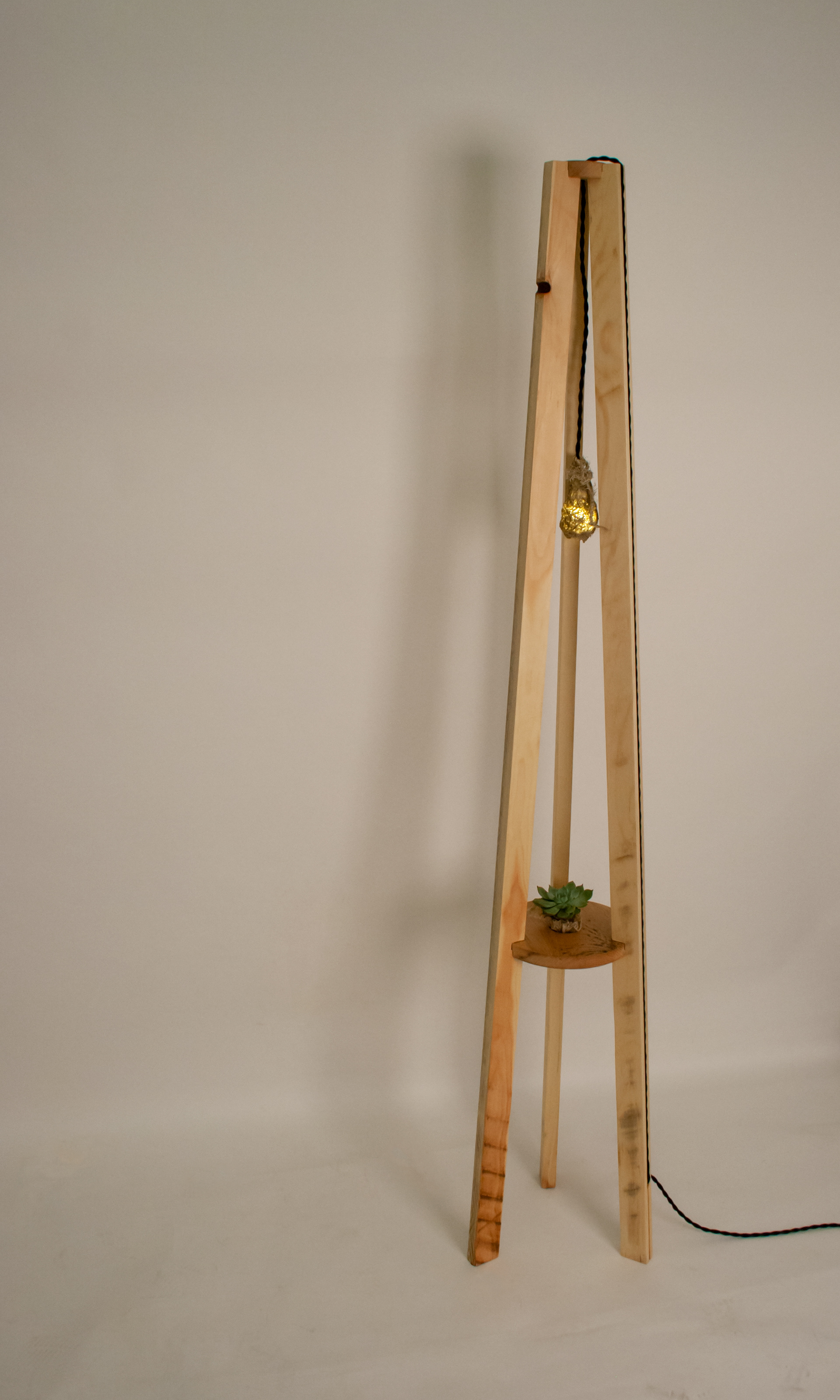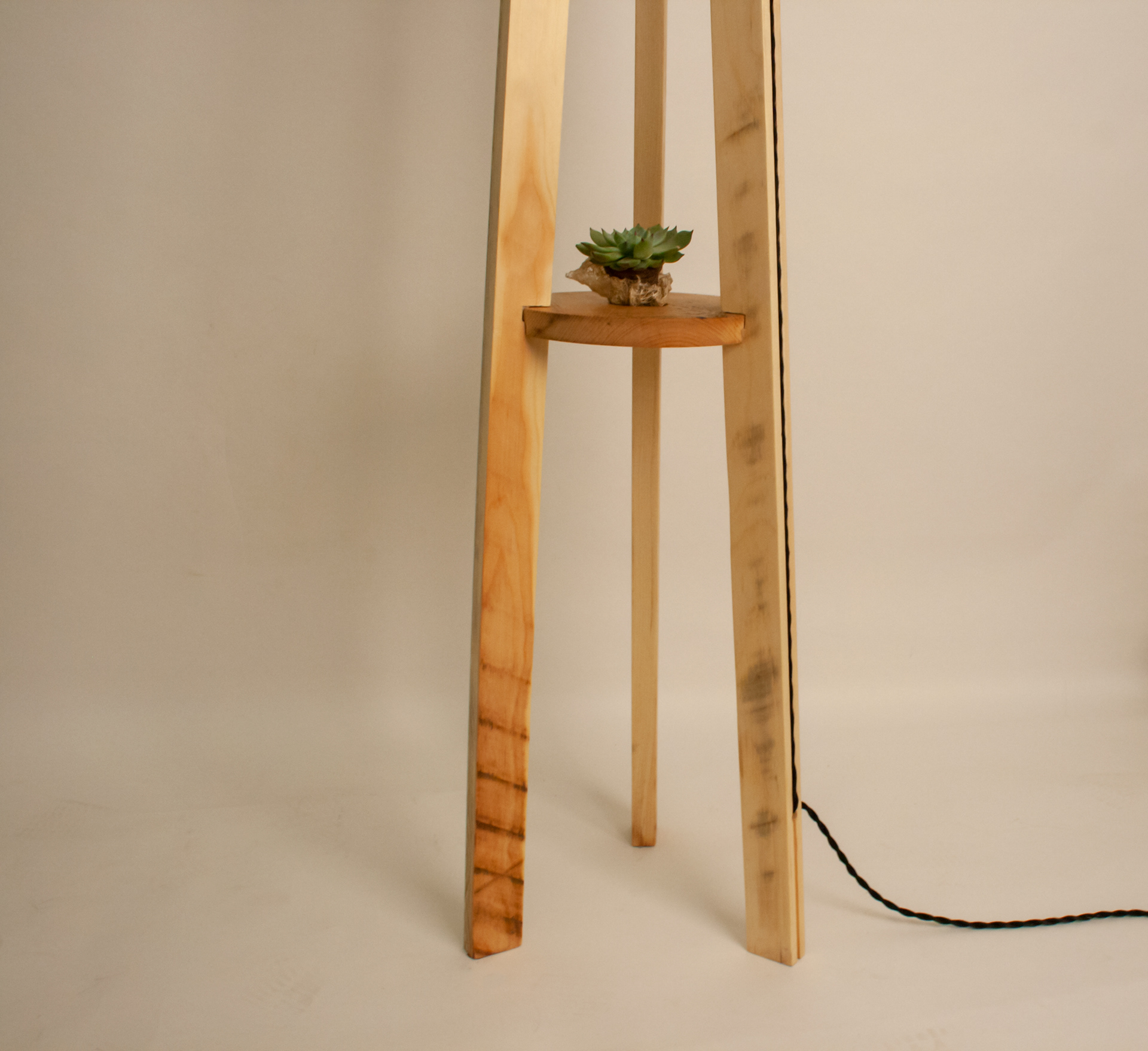Context:
The intended environment for the Second Harvest lamp is a living room in a small apartment. The space has ceiling light fixtures, but is in need of lower-intensity accent lighting that will contribute to a relaxing, social atmosphere.
The lamp is developed around a central theme of circular economy in design. The object must be designed for disassembly at the end of its life cycle to enable effective recycling of technological materials and biological nutrients. Inspiration for specific strategies was taken from approaches used in sustainable food production.
Principles
1. Nutrient Cycles
The primary concern of the lamp’s development is the consideration of the end-of-life outcome of materials. Elements must be capable of improving their environment as nutrients after the end of their function as a light source. To further support this principle, each of the materials used is in fact a by-product of food production processes, providing the lamp with its name: Second Harvest.
2. Impermanence
The second core principle of the Second Harvest lamp’s design is that of intentional impermanence. While much of modern object design has aimed to create durable items that will outlast their use, this has led to ubiquitous problems plastic and chemical waste that persist in the environment as pollutants for generations after the object’s life cycle ends. The idea of permanence is foreign to the natural systems that sustain us. The processes of normal aging, change, degredation, and renewal are necessary to life.
The Second Harvest lamp aims to reflect this through the use of delicate materials that will biodegrade throughout its use, changing the effect of the light it casts. As they break down further, the shades can be returned to the soil where they will break down completely into soil nutrients, or they can be used in an interim role as a starting pot for seedlings in the holder built into the lamp’s frame.
3. Honest Design
Every component of the Second Harvest lamp is visible, with no hidden pieces or interior compartments. The materials are minimally treated so as to maintain their inherent qualities.
The use cycle of the lamp encourages interaction by the user. Regular care in the way of reapplying wax to the frame and replacing the shades as they break down builds a relationship between the user and the lamp, increasing the emotional durability of the object. If the user desires, they can even participate to a fuller degree in the maintenance of the lamp by making their own replacement shades safely at home with instructions provided rather than purchasing them.









Material Sourcing
Barn Board
The wood used in the frame is reclaimed from demolished barns. It requires no new resources, has a unique visual character developed over years of weathering, and holds a strong link to the food production process.
Gelatine Plastic
Whereas some bioplastics are produced from raw materials that are rerouted from other uses, gelatine is a salvaged byproduct of meat and leather production. Although delicate, it has sufficient strength and flexibility in the controlled conditions required by interior lighting to be useful in this context.
Corn Husk Fibres
Corn husks are presently an underutilized source of long cellulose fibres. Unlike hemp, cotton, or flax, corn husks are a byproduct of existing food production and therefore require no additional land use. While research on commercial textile uses is still in early stages, the fibres can be separated for small-scale work such as this by using purely microbial retting process and manual refinement. They are used both as raw fibres to create a composite with the gelatine plastic and to create a hand-twisted twine that holds the shade in place.
Hide Glue
Closely related to gelatine, hide glue is a fully biodegradable adhesive made from byproducts of the meat industry. While it maintains its strength in the controlled conditions of an interior environment, at the end of use it can be harmlessly removed with water.




